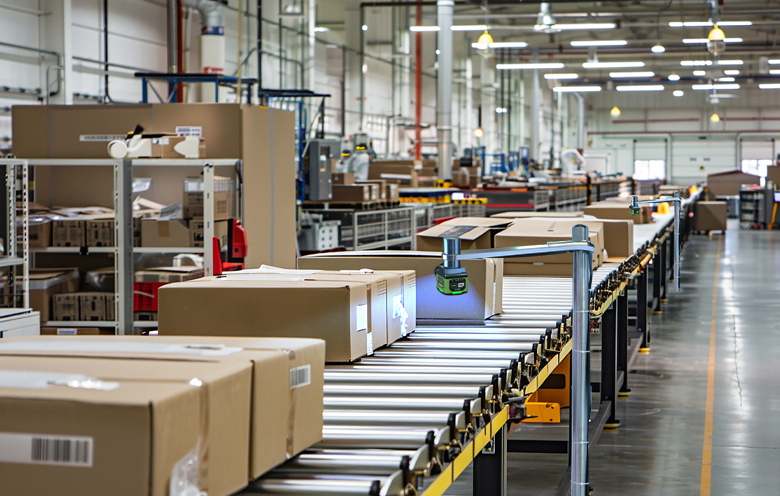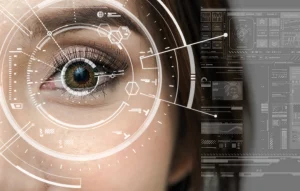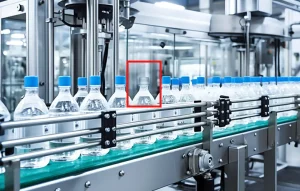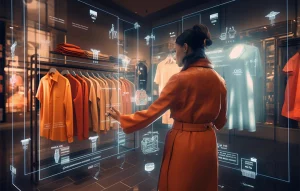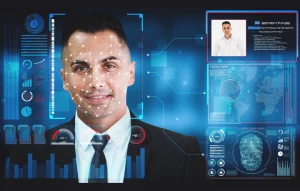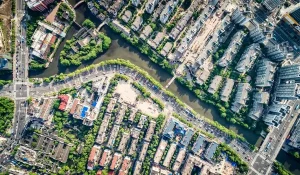Imagine an operations manager’s challenge in mathematical terms in logistics or warehousing. You have a workforce of ‘x’ individuals or machines that must navigate several critical nodal points, denoted as ‘y’, for example inventory shelves, sorting stations, or loading docks. Their mission? Interact with ‘z’ – the products and inventory within the warehouse – to ensure everything is picked, sorted, and delivered with precision.
The scenario, while straightforward in theory, becomes highly intricate in practice. Managing workers, machines, and tasks like sorting, picking, and packaging is a complex dance prone to human error. Operations managers often face delays, mistakes, and inefficiencies as they oversee these workflows.
Machine vision (MV) helps solve the problems mentioned above by automating the related processes. Vision systems, designed and implemented with the expertise of a machine vision consultant, can track the real-time movement of inventory, machines, and workers, thus providing constant feedback and guidance. This removes the uncertainty and error-prone aspects of manual coordination. The payoff is smooth and efficient operations.
What is machine vision?
Machine vision goes beyond cameras capturing visuals. It combines advanced cameras, sensors, high-speed processors, and algorithms to process visual data in real time.
Industries use MV for several reasons, from object recognition, material inspection, pattern recognition, electronic component analysis, and signature recognition to optical character recognition. MV aims to inspect, measure, and sort products at high speeds with precision, bringing efficiency to the process.
The MV process begins with imaging, automatic picture analysis, and information extraction. The following image shows the steps of the MV process system.

Undoubtedly, the MV process differs based on a detailed analysis of the needs and a project. More crucial for the MV system to work effectively is keeping MV’s sensitivity and resolution at its best. That makes MV different than traditional imaging systems.
To understand what makes MV unique, let’s go through its components.
What are the components of a machine vision system?
Each MV system comprises of hardware components and image analysis software.
Hardware components:
While most vision systems use a similar set of hardware, each component requires specialized choices, and they all must function together seamlessly. Key hardware components are:
- Processor: It is either embedded or in external PCs.
- Image sensor: Using CCD or CMOS technology, it converts light into electrical signals.
- Lens: Focuses light onto the image sensor for clear data capture.
- Cover: Protects the MV system from environmental hazards like dust, water, and oil.
- Lighting: Illuminates targets to ensure clear, accurate feature detection.
A right MV system is not just about assembling the hardware components.Take lighting, for example. Poor lighting affects image quality by causing glare, shadows, or obscured details based on the part’s texture (matte, reflecting, or refractive) and shape. Likewise, it is critical to ensure that each hardware component serves its purpose. Best machine vision consulting services take care of all the parameters.
Image analysis software
Hardware captures visuals, but image analysis software processes them for actionable results. Modern systems feature embedded processing to ensure real-time analysis without external PCs. Common tools include:
- Pixel counting: Quantifies pixel intensity for precise measurements.
- Blob detection: Recognizes distinct regions for advanced analysis.
- Pattern matching: Locates and positions objects.
- Color analysis: Differentiates objects when color matters.
While computer vision has been around for decades, recent advancements in artificial intelligence (AI), machine learning (ML), and image processing have revolutionized the MV system, enabling it to operate in dynamic environments. This has led to a significant improvement in efficiency and reduced errors, all achieved with high speed and accuracy. The following table vividly highlights the transformative difference between rule-based and AI-powered machine vision systems.
Table: Rule-based vs. AI-powered machine vision
| Machine vision type | Rule-based vision | Edge learning | Deep learning |
|---|---|---|---|
| Example images required | A few to several | 10-100 | Hundreds to thousands |
| Total time | Minutes to hours | Minutes | Hours to day |
| Technical expertise | Basic understanding of rules and logic | No prior experience needed | Training in AI and programming |
| Uses | Location, Measurement, Orientation | Classification, Inspection, Recognition | Defect detection, Variation, Customization |
Suggested: Do you want to know what wonders AI and computer vision can create when it mixes? It can be 100s. This is just one example of how this mix can transform facility management.
Who uses machine vision?
Machine vision evolves constantly and performs an ever-growing range of tasks in two main types of organizations:
Logistics providers and warehouses
Use MV to automate routing, tracking, and shipping, typically by reading barcodes or other encoding symbols.
Manufacturing facilities and factories
Use MV to automate operations throughout the manufacturing process. The MV systems see components, products, patterns, or codes and use that information to make decisions.
Implementing an MV system in logistics and warehousing?
Start by analyzing your facility’s operational challenges and goals. Our MV experts will assess your project feasibility. Discover smarter ways to optimize workflows and improve your productivity.

What are the benefits of machine vision in logistics and warehousing?
From accelerating operations to fostering safer work environments, machine vision has the power to revolutionize logistics and warehousing processes. Here’s how:
Enhance order accuracy
Incorrect orders can increase product returns and harm customer satisfaction. Our MV systems, with their unparalleled precision, validate items at every stage. For example:
- Match scanned items with packing lists
- Identify misplaced inventory in storage
Streamline tracking and traceability
Poor tracking disrupts supply chains and delays deliveries. Automated systems provide precise tracking information at every step. For example:
- Track packages from origin to delivery
- Locate goods in large warehouse facilities
Reduce operational downtime
Unplanned delays affect productivity and escalate costs. Visual monitoring ensures smooth workflows and flags potential issues early. For example:
- Spot bottlenecks in conveyor operations
- Detect faulty labels on shipment packages
Minimize waste and losses
Damaged goods and misrouted shipments lead to unnecessary costs. Vision systems ensure careful handling and efficient routing. For example:
- Identify damaged goods during loading
- Prevent overloading on transport vehicles
Improve worker safety
Unsafe environments risk injuries and disrupt workflows. Automated systems reduce physical labor in high-risk tasks. For example:
- Identify hazards on warehouse floors
- Ensure proper alignment of heavy equipment
Improving security with computer vision for a facility management firm
Softweb Solutions created a computer vision solution for a facility management firm. The solution helps in automating real-time monitoring for equipment and safety issues. It enhances safety and operational efficiency.
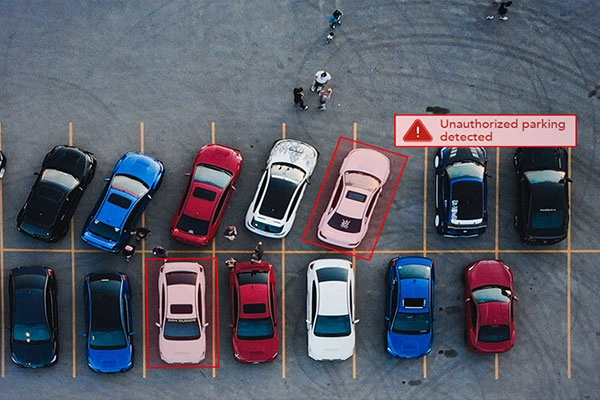
Applications of machine vision in logistics and warehousing
1. Automated sorting systems
Before: Sorting in logistics hubs relies on manual labor to identify, categorize, and route packages. Human error, fatigue, and inefficiencies cause frequent misrouting or delays.
How machine vision transforms it: Machine vision systems identify barcodes, labels, or package shapes in milliseconds. Using advanced image recognition algorithms, automated sorting systems quickly and accurately categorize items for routing.
Impact:
- Eliminates manual sorting errors.
- Reduces delays in package processing.
- Ensures each item reaches the correct destination without fail.
2. Inventory management
Before: Warehouses use manual counts or traditional barcode scanners to manage inventory. These processes consume time and often result in human error, causing discrepancies between physical stock and records.
How machine vision transforms it: Vision systems scan shelves and bins continuously to provide real-time updates. They detect misplaced items or incorrect stock levels using 3D imaging and AI-based analytics.
Impact:
- Prevents discrepancies in inventory counts.
- Ensures real-time visibility of stock levels.
- Reduces the occurrence of misplaced items or inventory shortages.
3. Quality inspection
Before: Workers inspect packaging, labels, and contents manually during quality checks. This method requires significant labor and often results in inconsistencies due to human fatigue or oversight.
How machine vision transforms it: Machine vision automates inspection processes by analyzing visual cues like packaging integrity, label accuracy, and product placement. Advanced systems also detect microscopic damages.
At Softweb Solutions, we bring decades of expertise in developing tailored machine vision applications for logistics and warehousing. Highlighting our approach, an SME from Softweb Solutions states:
“Our machine vision solutions integrate AI-driven defect detection, edge computing, and real-time analytics. By using TensorFlow and OpenCV, our systems ensure precision in quality control. The result is absolute quality, reduced waste, and enhanced customer satisfaction.”
Suggested: Do you want to know what wonders AI and computer vision can create when it mixes? It can be 100s. This is just one example of how this mix can transform facility management.
Our implementation process includes:
| Quality inspection steps | Description |
|---|---|
| Packaging integrity analysis | Scans packages for tears, improper sealing, or any visible damage. |
| Label verification | Ensures labels are correctly placed and match the shipment details. |
| Content placement accuracy | Verifies that items inside packaging are correctly arranged and not misplaced. |
| Microscopic damage detection | Detects subtle defects that are often missed in manual inspections. |
Impact:
- Ensures that only correctly packed and labeled items leave the facility.
- Reduces customer complaints caused by packaging errors.
- Minimizes product returns due to incorrect packaging.
4. Load verification
Before: Verifying that trucks or containers contain the correct items and follow the proper order requires manual methods. These methods often lead to errors, inefficient loading, and failure to comply with weight regulations.
How machine vision transforms it: Vision systems scan items during loading, ensuring that each product matches the manifest and follows the optimal sequence. Sensors verify weight distribution.
Impact:
- Ensures compliance with safety and weight regulations.
- Minimizes unloading time by optimizing the sequence of deliveries.
- Prevents loading errors and ensures accuracy in shipment preparation.
5. Barcode and QR code scanning
Before: Traditional barcode scanning relies on handheld devices, requiring workers to handle each package manually. This method slows down operations, particularly during peak seasons.
How machine vision transforms it: Machine vision captures barcode and QR code data from multiple angles, even under challenging conditions like low lighting or damaged labels.
Impact:
- Accelerates data capture for faster processing.
- Reduces reliance on manual handling, improving efficiency.
Ensures accurate package identification regardless of label condition.
Additional applications
- Pallet dimensioning and optimization
- Predictive maintenance
- Tracking and Tracing
- Robotics integration
Ready to explore machine vision applications in logistics and warehousing?
Leverage our highly tailored solutions to tackle your unique operational challenges. Our MV experts align technology with your specific business needs. Explore opportunities to enhance accuracy, efficiency, and compliance across logistics processes.

The future: What’s next for machine vision in logistics?
The future of machine vision in logistics and warehousing will be shaped by its evolution into a multifaceted technical stack integrated with Industry 4.0. This advancement combines machine learning, robotics, and high-speed networking, delivering smarter, more adaptive logistics operations. Here’s what lies ahead:
- Edge computing: Processing data at the source (e.g., cameras) instead of centralized servers reduces latency. This makes real-time decision making faster and ensures reliability, especially for critical logistics operations.
- 3D vision technology: Moving beyond flat imaging, 3D vision will measure depth precisely. This unlocks capabilities like efficient pallet stacking, autonomous obstacle navigation, and spatial awareness in warehouses.
- AI-enhanced predictive maintenance: Machine vision will transition from monitoring to proactive problem-solving. Systems will detect early signs of wear and tear, minimizing downtime and preventing failures before they occur.
Suggested: When talking about ‘what’s next,’ how can we complete this without generative AI? Learn more about how generative AI in computer vision can revolutionize modern businesses.
Closing thoughts: A call to innovate
Machine vision use cases in logistics and warehousing demonstrate how this technology can transform operations from the ground up. From real-time inventory management to precision sorting and defect detection, machine vision empowers businesses to meet the rising demands of modern consumers.
Companies that hesitate to adopt machine vision risk falling behind competitors already reaping its benefits. The journey to implementation might seem daunting, but the rewards—efficiency, accuracy, and data-driven decision-making—make it a worthwhile investment. If you are ready to explore machine vision applications tailored to your logistics challenges, start today. The future of logistics is not waiting, and neither should you.


